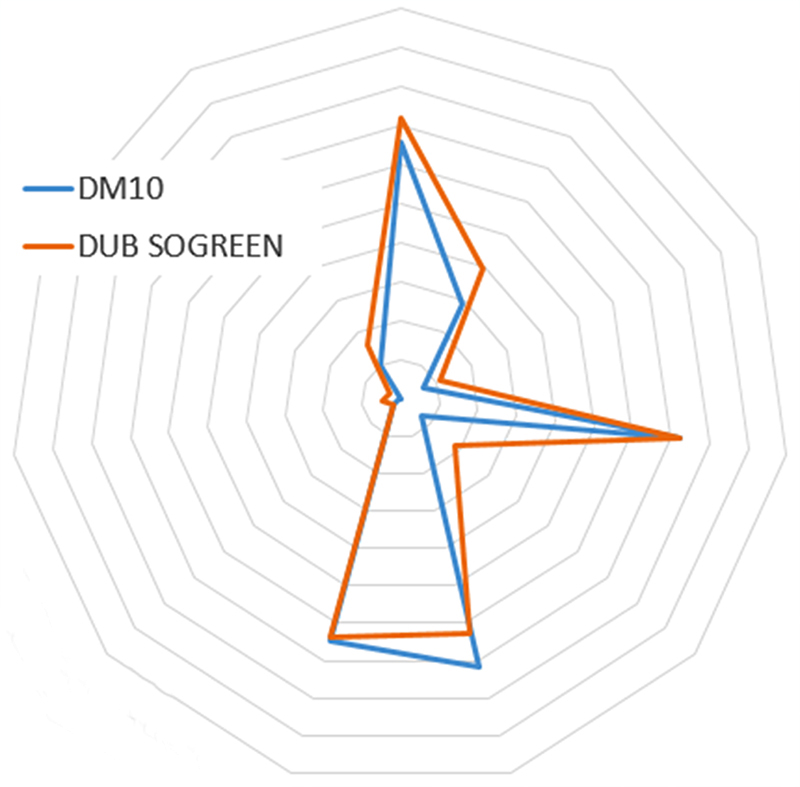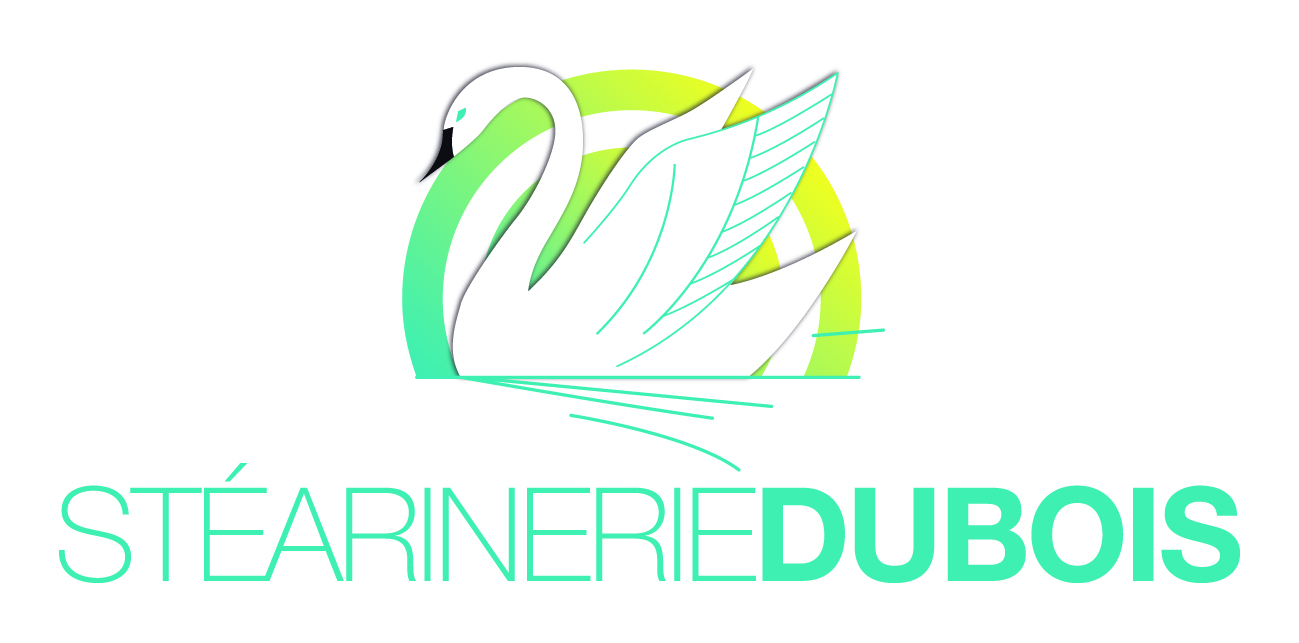Certain global trends have become prerequisites on the cosmetics market, and today our know-how in oleochemistry is at the forefront of a demand for green, responsible, sustainable, biodegradable products.
Still, the desire for alternative ingredients comes with the same constraints as in the past: controlling costs while delivering exceptional sensory qualities and visible effects.
To meet this demand, in 2010 we initiated a comprehensive study of our esters in relation to the leading emollients on the market.
This led to a full-fledged collaborative effort (with university researchers and other experts) to gather data and process it using statistical tools (proximity matrices to identify similarities between ingredients, mapping of emollients, etc.) as well as instrumental methods (objective analyses of performance, sensoriality and textures).
Today, a cosmetics product must offer the consumer effectiveness, safety and sensory qualities. That is why Stearinerie Dubois has been pursuing this approach since 2010, developing its sensory expertise and, in 2016, forming an internal panel of sensory experts.
This expertise has enabled us to “classify” our esters and the pertinent benchmarks in the form of radar charts, to facilitate data processing and comparisons.
Our sensory expertise
Our panel consists of ten expert evaluators who engage in daily training, the better to translate their sensory perceptions into quantitative sensorial information.
The evaluations are carried out through comparisons with benchmarks in order to classify the products. If the goal is to identify an alternative, the comparison is made in relation to a reference formulation containing the benchmark.
Consequently, each evaluator is able to give a precise, reproducible characterization of our esters as well as the benchmarks.
On a more detailed level, each product is evaluated in two phases according to clearly defined descriptors and protocols. During application, the criteria to be evaluated are Initial perception, Texture, Melting, Spreadability, Roughness and Penetration.
After application, the evaluation comprises Smooth finish, Greasy finish, Sticky finish, Glossy finish and Residual film.
Each descriptor is evaluated on a scale of 0 to 10, with 0 indicating that the analysis criterion is absent and 10 indicating that the criterion is strongly present.
Our panel’s specialization in glycerides has enabled us to define the sensory profiles of about 150 esters and some 15 benchmarks, including silicones, vegetable oils and other petroleum derivatives.
The global trend on the cosmetics market calls for the substitution of petroleum products in formulation. That is why Stearinerie Dubois, in keeping with its commitment to green chemistry and respect for nature, has undertaken this study, relying on its scientific and sensory expertise.
Identification of the petroleum products to be substituted
We have selected four ingredients that are commonly used in all types of applications and galenic forms: cyclopentasiloxane (D5), dimethicone 10 cSt (DM 10), isohexadecane and light liquid paraffin (LLP) 20 cSt.
Each of these products is used in skincare and/or makeup formulations for its particular functional and sensory properties.
After evaluation by our panel of experts, their sensory profiles were compiled and are represented as follows:

Our scientific approach
In order to identify the best alternatives for each of these products, we defined a precise scientific approach based on statistical tools and divided into three phases:
- Compilation of available sensory and physico-chemical data
- Processing of existing data
- Gathering of additional sensory data and selection of alternatives from our portfolio.
Based on our physico-chemical and sensory database, we first selected the most discriminating, pertinent criteria (spreadability, penetration, melting point, viscosity, etc.) for identifying alternatives.
To this end, an Analysis of Variance (ANOVA) was conducted to confirm the discriminating character of these parameters.
Secondly, the data were subjected to statistical processing for the purpose of screening the ingredients. The resulting proximity matrices made it possible to identify the esters from our range whose properties most closely correspond to those of the products to be substituted.
Lastly, in order to ensure the precision of our sensory data, each potential alternative was evaluated in direct comparison with the product to be substituted.
The statistical processing of the data allowed us to clearly identify the differences among the benchmarks and find the best alternatives made by STEARINERIE DUBOIS.

Alternative to CYCLOPENTASILOXANE:
DUB OE HP
DUB OE HP is a fatty acid ester formed by the esterification of ethanol and oleic acid. It is rich in omega 9, the most abundant long-chain monounsaturated fatty acid in the human body.
It is a colorless to light yellow liquid.
DUB OE HP is characterized by very good spreadability, with a spreading value of 1053 mm2/10 min.

It is highly compatible with all types of solvents and cosmetic ingredients (chloroform, ethanol, vegetable oils, liquid paraffin, silicones, esters, etc.) and is water insoluble.
It is also an excellent liposoluble solubilizer, allowing the incorporation of active ingredients, silicones, polar oils… It liquefies the oil phase for optimal use and has no rheological impact on the formula, even at low temperatures, due to its low melting point (under -30°C).
It is a hydration booster (in vivo test) and biodegradable according to standard 301 F.
Galenic compatibility: Make-up (lipsticks, foundations, mascaras), skincare (emulsions, microemulsions, massage oils), suncare (sun oils, sun creams/lotions).
Labels: COSMOS, ECOCERT, NOI=1.
Alternative to DIMETHICONE 10:
DUB SOGREEN
Like dimethicone 10 cSt, DUB SOGREEN offers excellent spreading and boosts the formula’s emollience. It is sensorially very similar in skincare and makeup.
DUB SOGREEN strengthens the cutaneous hydrolipidic film and protects the skin against dehydration.
Having a greater polar and dispersive component than dimethicone, DUB SOGREEN gives greater stability to the lipidic system and O/E emulsions. A hydration booster (in vivo test), it is characterized by a dry feel with a coddling, moisturizing effect.
Galenic compatibility: used in skincare (emulsions, body oils…) or makeup (lipsticks, foundations…).
Label: NOI=1.

Alternative to ISOHEXADECANE:
DUB LAHE
Isohexadecane is used for its unique soft feel, lightness and hydration-boosting capacity. It finds its equivalent in DUB LAHE, a safe ingredient in terms of both functional and sensory qualities.
There is no classification for this product, which offers identical sensoriality while delivering emollience, gloss, a dry feel and spreadability similar to that of isohexadecane.
In addition to this sensory equivalence, the two compounds are also very close in terms of viscosity, surface tension and polar and dispersive components.
DUB LAHE is offered as a 1:1 substitute for isohexadecane.
Galenic compatibility: used in haircare products (shampoos, conditioners) and makeup (foundations, lipsticks…) at levels ranging from 1 to 15%.
Label: NOI=0.64.

Alternative to LLP:
DUB TOGEE
(Visual: Idea of a light shield, a “raincoat” for the skin …)
DUB TOGEE leaves a light film on the skin’s surface, a protective veil to shield it against external stress factors. Used as a hydration booster, DUB TOGEE exerts a dual action, moisturizing and replumping the skin.
In addition to these properties, DUB TOGEE offers better penetration and a softer, less greasy finish compared with LLP.
Galenic compatibility: its many applications include skincare (emulsions, massage oils…) and makeup (lipsticks, foundations, mascaras…). DUB TOGEE will be positioned as a paraffin alternative with a high natural origin index.
Label: NOI= 0.89.
Sensory Profile:

Email: pc@lehvoss.co.uk
Phone: +44 (0) 1260 291 000


